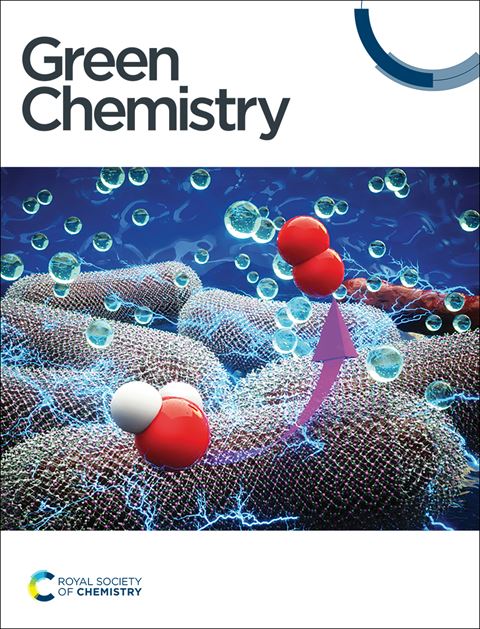Photoinduced tunable fluoroalkylation or sulfonylation/cyclization of methindolylstyrenes via electron donor–acceptor complexes†
IF 9.3
1区 化学
Q1 CHEMISTRY, MULTIDISCIPLINARY
引用次数: 0
Abstract
Radical-mediated regioselective and tunable functionalization of methindolylstyrene, which contains both an indole and an arene as competitive electron-rich donors, through the photoexcitation of electron donor–acceptor (EDA) complexes is highly appealing yet challenging. Herein, we present a photoinduced catalyst-free sulfonylation or fluoroalkylation/cyclization of β-4′-methindolylstyrene derivatives via EDA complexes. This reaction worked well with various sulfonyl chlorides without any additives to afford 3-aryl-4-sulfonyl-1,3,4,5-tetrahydrobenzo[cd]-indoles in moderate yields with high regio- and diastereoselectivities. For ethyl difluoroiodoacetate or perfluoroiodoalkane functional reagents, the addition of NaHCO3 in different reaction solvents could, respectively, deliver 4-fluoroalkyl-1,3,4,5-tetrahydrobenzo[cd]-indoles (in MeCN) and 2-fluoroalkylated tetrahydrobenzo[cd]-indoles (in CH2Cl2). Additionally, 1,3-diphenylpropene without a pendant indole moiety could also be suitable for this transformation to afford allyl sulfone derivatives. The reaction features photocatalyst-free conditions, broad substrate specificity, and high and tunable regioselectivity, which greatly expands the photochemistry of EDA complexes.
通过电子供体-受体配合物光诱导甲基苯乙烯的可调氟烷基化或磺化/环化
通过电子给体-受体(EDA)配合物的光激发,自由基介导的甲基苯乙烯(含吲哚和芳烃作为竞争性富电子给体)的区域选择性和可调功能化具有很高的吸引力,但也具有挑战性。在这里,我们提出了一个光诱导无催化剂磺酰化或氟烷基化/环化β-4 ' -甲基苯乙烯衍生物通过EDA配合物。在不添加任何添加剂的情况下,该反应可以得到3-芳基-4-磺酰-1,3,4,5-四氢苯并[cd]-吲哚,收率中等,具有较高的区域选择性和非对映选择性。对于二氟碘乙酸乙酯或全氟碘烷功能试剂,在不同的反应溶剂中加入NaHCO3分别可以生成4-氟烷基-1,3,4,5-四氢苯并[cd]-吲哚(在MeCN中)和2-氟烷基化四氢苯并[cd]-吲哚(在CH2Cl2中)。此外,不含悬垂吲哚部分的1,3-二苯丙烯也可以用于该转化,从而得到烯丙基砜衍生物。该反应具有无光催化剂条件、广泛的底物特异性和高可调的区域选择性等特点,极大地扩展了EDA配合物的光化学性质。
本文章由计算机程序翻译,如有差异,请以英文原文为准。
求助全文
约1分钟内获得全文
求助全文
来源期刊

Green Chemistry
化学-化学综合
CiteScore
16.10
自引率
7.10%
发文量
677
审稿时长
1.4 months
期刊介绍:
Green Chemistry is a journal that provides a unique forum for the publication of innovative research on the development of alternative green and sustainable technologies. The scope of Green Chemistry is based on the definition proposed by Anastas and Warner (Green Chemistry: Theory and Practice, P T Anastas and J C Warner, Oxford University Press, Oxford, 1998), which defines green chemistry as the utilisation of a set of principles that reduces or eliminates the use or generation of hazardous substances in the design, manufacture and application of chemical products. Green Chemistry aims to reduce the environmental impact of the chemical enterprise by developing a technology base that is inherently non-toxic to living things and the environment. The journal welcomes submissions on all aspects of research relating to this endeavor and publishes original and significant cutting-edge research that is likely to be of wide general appeal. For a work to be published, it must present a significant advance in green chemistry, including a comparison with existing methods and a demonstration of advantages over those methods.
 求助内容:
求助内容: 应助结果提醒方式:
应助结果提醒方式:


